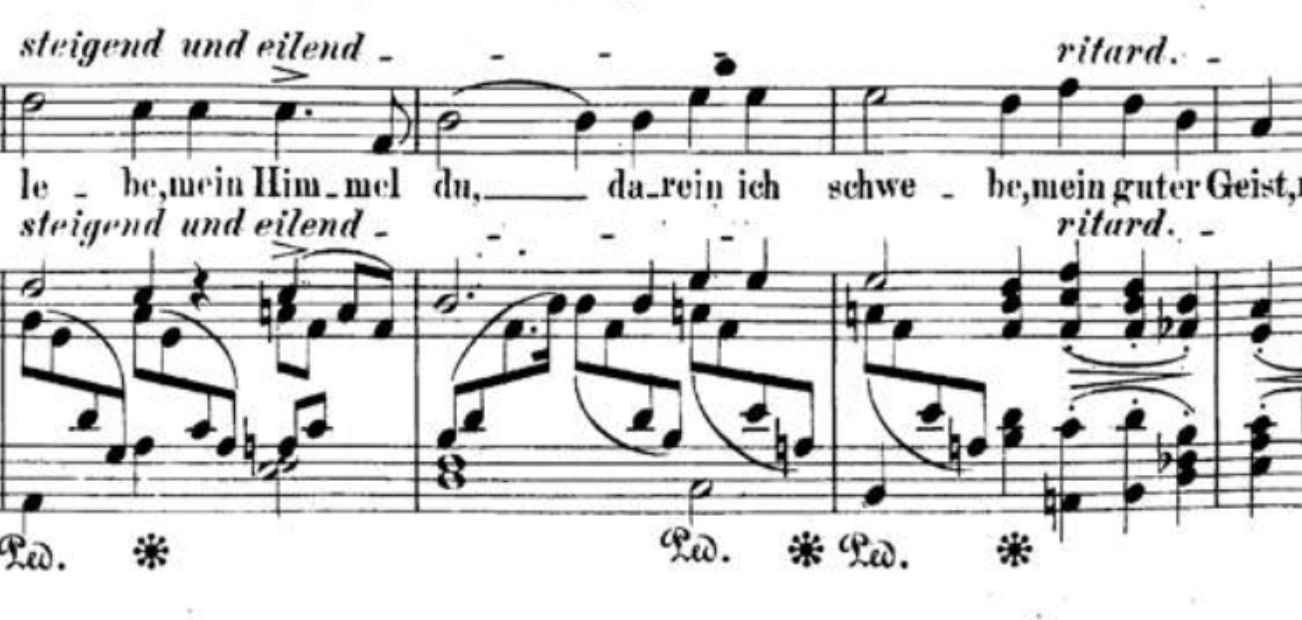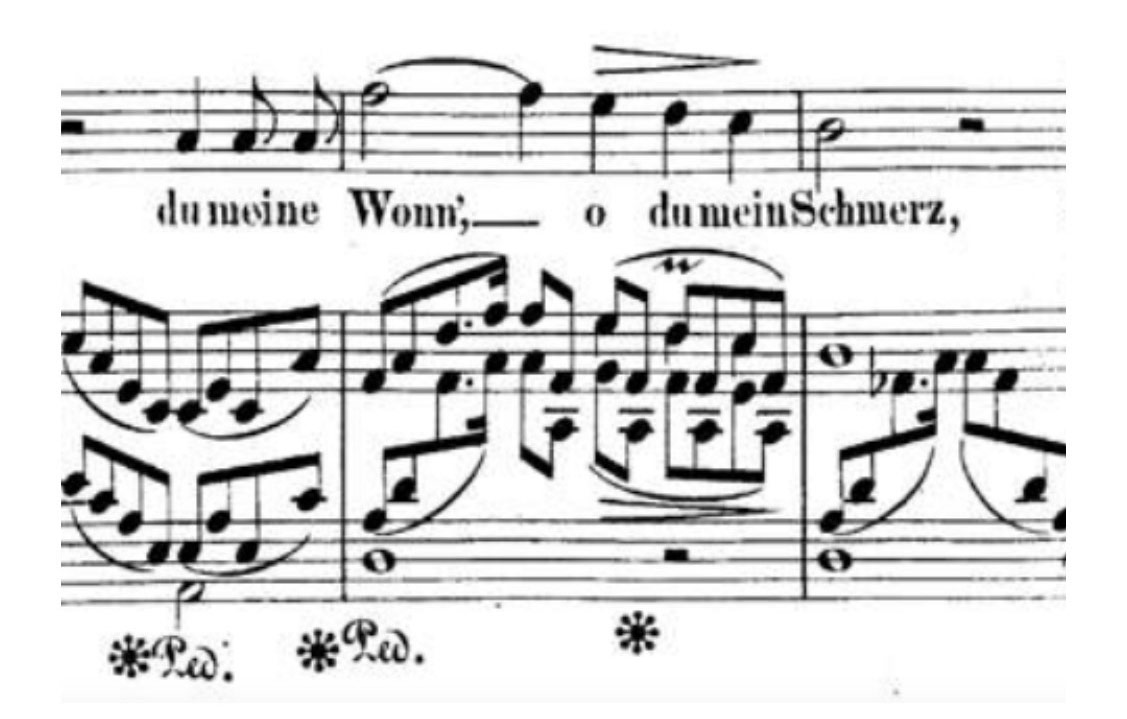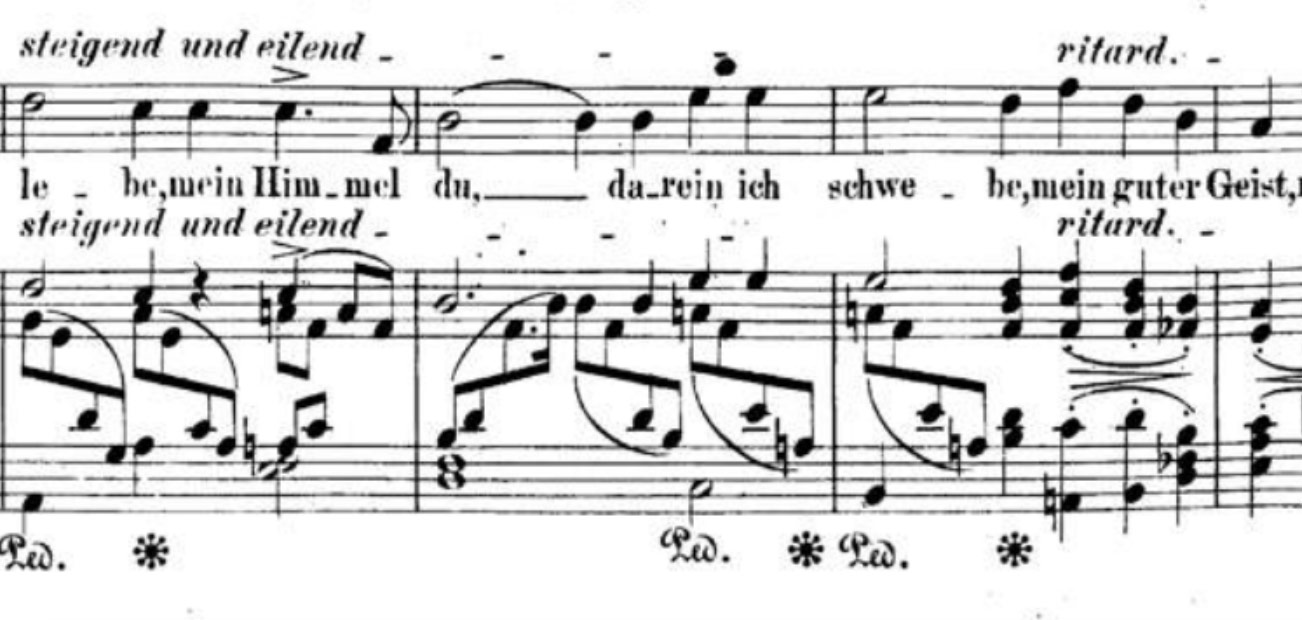
Song guides: Widmung
How-toWe’re continuing our Song Guides series with another guest post by mezzo-soprano and founding member of the art song initiative Lynx Project, Megan Moore. “Widmung” is one of many songs Robert Schumann wrote for his wife, Clara. Interesting history is the fun part, and to get there, singers need to master things like singing legato in German, and pulling off a successful two-against-three. Moore helps her fellow Lieder lovers through this beauty of German Romanticism. The text, as translated by Emily Ezust on lieder.net:
You my soul, you my heart, you my bliss, o you my pain, you the world in which I live; you my heaven, in which I float, o you my grave, into which I eternally cast my grief. You are rest, you are peace, you are bestowed upon me from heaven. That you love me gives me my worth; your gaze transfigures me; you raise me lovingly above myself, my good spirit, my better self!
So what is the correct tempo, anyway?
The piece is set in 3⁄2 and marked “innig, lebhaft”. “Lively”, people! We can be “innig” (“intimate”, “heartfelt”) without languishing, am I right? It’s also important to note that the “B” section traditionally, and I think appropriately, tends to yield slightly in tempo, so it’s really important not to start too slowly. On the other hand, Schumann sets us up with three distinct beats per measure, which definitely implies at least some broadness in tempo. Considering there’s room for flexibility within the lines, it’s important not to marry ourselves to a metronome marking, but find a broadness in the three pattern that balances with a lively energy; never faster than allows for clear text.
A thought on the piano part
Schumann writes an exciting, rhythmically energized line for the piano to start and end the piece, but singers: this is not our cue to abandon the long, beautiful line Schumann wrote for us. We can think of the piano’s rushing line as the excitement and passion of love boiling within us, while above it we maintain a sense of calm awe.
- The poem is essentially a long list, and a breath or lift after every single comma is unnecessary and even detrimental to the long legato phrases Schumann intended. A breath after “Seele”, for example, is probably not needed. The first vocal phrase really continues through the half rest in measure three, and the breath and energy should continue through it. Clearly defining a concept of the different images presented in the poem will make the text clear. Making sure the important words, such as “Seele” and “Herz”, are emphasized in phrasing and vocal color will also aid in textual clarity.






A note on the postlude
We all know what’s quoted here, right? It’s a phrase from Schubert’s Ave Maria, supposedly a favorite of Clara’s and often heard at weddings. Schumann wrote this piece in 1840, during his “year of song” and wrote it, along with the rest of Op.25, for his beloved Clara as a wedding gift.
Have questions? Want to request a piece for our Song Guides or Aria Guides? Get in touch at [email protected].


Comments